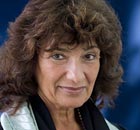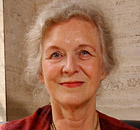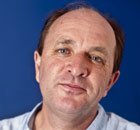What is creative non-fiction? Should factual books use literary techniques? Writers on subjects ranging from the Red Cross to whales to India reflect on their methods

Photograph: Petro Feketa/Alamy
Lisa Appignanesi
 Photograph: Colin McPherson/Corbis The term "non-fiction" has always seemed to me a strange sort of negative beast, as if fiction, the making up of stories, always came first and was the primary form of putting words together. It's a catch-all category, of course, and makes about as much sense as defining all prose as "non-poetry". It's also peculiar to English classification. The French speak of "essais", which at least has the grace of harking back to Montaigne and implying an attempt to think about the world.
Photograph: Colin McPherson/Corbis The term "non-fiction" has always seemed to me a strange sort of negative beast, as if fiction, the making up of stories, always came first and was the primary form of putting words together. It's a catch-all category, of course, and makes about as much sense as defining all prose as "non-poetry". It's also peculiar to English classification. The French speak of "essais", which at least has the grace of harking back to Montaigne and implying an attempt to think about the world.
In my writing life, I seem to have navigated an odd course between fiction and its negation, always half-wishing when I'm immersed in one that I were embarked on the other. I want the free flight of story when I'm hunkered down in facts and wish for a character who could offer a statement contradicted by another character. On the other hand, when I'm writing fiction, I often enough find myself wishing that I could fill the blank page with some meaty matter that didn't demand the difficult act of creating a scene that then had to leave most of the matter out in order to live. Non-fiction depends on remembering your research, fiction on forgetting it.
Over the years I've noticed that my non-fiction has learned not a little about storytelling, narrative energy and scene-setting from my fiction and has been enlivened by it. As I was pondering the writing of my family memoir, Losing the Dead, I realised that "voice" was as crucial here as in fiction. I just hadn't been able to write the memoir, though all the research was in place, until the voice of the book came to me. It's my own, of course, but translated into words ownership is always a creation.
Gillian Beer
 Photograph: Linda Nylind for the Guardian Sometimes I think I write for the 20 minutes of euphoria when a piece is finished, and that might explain why I like writing essays (20 minutes' reward for 7,000 words, instead of the delayed gratification of 80,000 book-length). But that's not all of it. I love the immersion of writing and the curiosity of research. It's strange to enter another person's mind and discover there further reaches of time, different rhythms of thinking, new kinds of knowledge and emotions grappling the writer, forcing form, held by form.
Photograph: Linda Nylind for the Guardian Sometimes I think I write for the 20 minutes of euphoria when a piece is finished, and that might explain why I like writing essays (20 minutes' reward for 7,000 words, instead of the delayed gratification of 80,000 book-length). But that's not all of it. I love the immersion of writing and the curiosity of research. It's strange to enter another person's mind and discover there further reaches of time, different rhythms of thinking, new kinds of knowledge and emotions grappling the writer, forcing form, held by form.
I'm fascinated by how we come to have new ideas. How do writers turn language, which is communal and soaked in history, in a new direction that can encompass thoughts quite out of kilter with the society's current assumptions? That's one reason why I've spent so much time reading and thinking about Darwin's language. Darwin worked with an open, non-technical vocabulary: the great family, the struggle for life, the face of nature, natural selection, contingency, imperfection. This open language generated contradictory stories in which leftover elements in metaphors began to work out new narratives: the descent of man, the ascent of man, the interdependence of all forms of life, the struggle and destruction. To understand how he controlled the ebullience of his imagination, I had to learn much about 19th-century habits of thought among theologians, natural historians, political theorists, humorists, economists and family dynamics. The thick present of the past is what I most try to communicate when I write. These people were as alive as we are. And writing allows some of that experience and that thinking to survive, close up to the present reader.
William Dalrymple
 Photograph: Nick Cunard/Rex Features I think it is absolutely vital to scribble constantly: not full sentences, so much as lists of significant detail – the colour of a hillside, the shape of a tulip, the way a particular tree haunts a skyline. Creating fine prose comes later – back at home at the keyboard. The travel writers I really admire all keep exceptionally detailed notes: Theroux, Thubron, Chatwin. If 19th-century travel writing was principally about place – about filling in the blanks of the map and describing remote places that few had seen – I think that some of the best 21st-century travel writing is about people: exploring the extraordinary diversity that still exists in the world beneath the veneer of globalisation. The second golden rule is to enjoy yourself. If you lose interest in your own journey, the reader can tell immediately and soon loses interest too. The third golden rule is to be open to the unexpected. In 1990, I went up to Simla to interview two old stayers-on who had lived in Delhi in the 1930s and would, I hoped, be able to re-create that lost world of the Raj. In the event, I arrived 10 years too late: both had gone senile and now imagined they were being persecuted by Jewish prostitutes who popped up from beneath the floorboards to put dope in their food. I failed to get anything at all useable about 1930s Delhi, and left disappointed that I had wasted an afternoon. It was only when I told my wife, Olivia, that she pointed out that the bizarre afternoon would make an excellent sequence in itself. It became one of my favourite sections in City of Djinns.
Photograph: Nick Cunard/Rex Features I think it is absolutely vital to scribble constantly: not full sentences, so much as lists of significant detail – the colour of a hillside, the shape of a tulip, the way a particular tree haunts a skyline. Creating fine prose comes later – back at home at the keyboard. The travel writers I really admire all keep exceptionally detailed notes: Theroux, Thubron, Chatwin. If 19th-century travel writing was principally about place – about filling in the blanks of the map and describing remote places that few had seen – I think that some of the best 21st-century travel writing is about people: exploring the extraordinary diversity that still exists in the world beneath the veneer of globalisation. The second golden rule is to enjoy yourself. If you lose interest in your own journey, the reader can tell immediately and soon loses interest too. The third golden rule is to be open to the unexpected. In 1990, I went up to Simla to interview two old stayers-on who had lived in Delhi in the 1930s and would, I hoped, be able to re-create that lost world of the Raj. In the event, I arrived 10 years too late: both had gone senile and now imagined they were being persecuted by Jewish prostitutes who popped up from beneath the floorboards to put dope in their food. I failed to get anything at all useable about 1930s Delhi, and left disappointed that I had wasted an afternoon. It was only when I told my wife, Olivia, that she pointed out that the bizarre afternoon would make an excellent sequence in itself. It became one of my favourite sections in City of Djinns.
More at the Guardian
 Photograph: Colin McPherson/Corbis The term "non-fiction" has always seemed to me a strange sort of negative beast, as if fiction, the making up of stories, always came first and was the primary form of putting words together. It's a catch-all category, of course, and makes about as much sense as defining all prose as "non-poetry". It's also peculiar to English classification. The French speak of "essais", which at least has the grace of harking back to Montaigne and implying an attempt to think about the world.
Photograph: Colin McPherson/Corbis The term "non-fiction" has always seemed to me a strange sort of negative beast, as if fiction, the making up of stories, always came first and was the primary form of putting words together. It's a catch-all category, of course, and makes about as much sense as defining all prose as "non-poetry". It's also peculiar to English classification. The French speak of "essais", which at least has the grace of harking back to Montaigne and implying an attempt to think about the world.In my writing life, I seem to have navigated an odd course between fiction and its negation, always half-wishing when I'm immersed in one that I were embarked on the other. I want the free flight of story when I'm hunkered down in facts and wish for a character who could offer a statement contradicted by another character. On the other hand, when I'm writing fiction, I often enough find myself wishing that I could fill the blank page with some meaty matter that didn't demand the difficult act of creating a scene that then had to leave most of the matter out in order to live. Non-fiction depends on remembering your research, fiction on forgetting it.
Over the years I've noticed that my non-fiction has learned not a little about storytelling, narrative energy and scene-setting from my fiction and has been enlivened by it. As I was pondering the writing of my family memoir, Losing the Dead, I realised that "voice" was as crucial here as in fiction. I just hadn't been able to write the memoir, though all the research was in place, until the voice of the book came to me. It's my own, of course, but translated into words ownership is always a creation.
Gillian Beer
 Photograph: Linda Nylind for the Guardian Sometimes I think I write for the 20 minutes of euphoria when a piece is finished, and that might explain why I like writing essays (20 minutes' reward for 7,000 words, instead of the delayed gratification of 80,000 book-length). But that's not all of it. I love the immersion of writing and the curiosity of research. It's strange to enter another person's mind and discover there further reaches of time, different rhythms of thinking, new kinds of knowledge and emotions grappling the writer, forcing form, held by form.
Photograph: Linda Nylind for the Guardian Sometimes I think I write for the 20 minutes of euphoria when a piece is finished, and that might explain why I like writing essays (20 minutes' reward for 7,000 words, instead of the delayed gratification of 80,000 book-length). But that's not all of it. I love the immersion of writing and the curiosity of research. It's strange to enter another person's mind and discover there further reaches of time, different rhythms of thinking, new kinds of knowledge and emotions grappling the writer, forcing form, held by form.I'm fascinated by how we come to have new ideas. How do writers turn language, which is communal and soaked in history, in a new direction that can encompass thoughts quite out of kilter with the society's current assumptions? That's one reason why I've spent so much time reading and thinking about Darwin's language. Darwin worked with an open, non-technical vocabulary: the great family, the struggle for life, the face of nature, natural selection, contingency, imperfection. This open language generated contradictory stories in which leftover elements in metaphors began to work out new narratives: the descent of man, the ascent of man, the interdependence of all forms of life, the struggle and destruction. To understand how he controlled the ebullience of his imagination, I had to learn much about 19th-century habits of thought among theologians, natural historians, political theorists, humorists, economists and family dynamics. The thick present of the past is what I most try to communicate when I write. These people were as alive as we are. And writing allows some of that experience and that thinking to survive, close up to the present reader.
William Dalrymple
 Photograph: Nick Cunard/Rex Features I think it is absolutely vital to scribble constantly: not full sentences, so much as lists of significant detail – the colour of a hillside, the shape of a tulip, the way a particular tree haunts a skyline. Creating fine prose comes later – back at home at the keyboard. The travel writers I really admire all keep exceptionally detailed notes: Theroux, Thubron, Chatwin. If 19th-century travel writing was principally about place – about filling in the blanks of the map and describing remote places that few had seen – I think that some of the best 21st-century travel writing is about people: exploring the extraordinary diversity that still exists in the world beneath the veneer of globalisation. The second golden rule is to enjoy yourself. If you lose interest in your own journey, the reader can tell immediately and soon loses interest too. The third golden rule is to be open to the unexpected. In 1990, I went up to Simla to interview two old stayers-on who had lived in Delhi in the 1930s and would, I hoped, be able to re-create that lost world of the Raj. In the event, I arrived 10 years too late: both had gone senile and now imagined they were being persecuted by Jewish prostitutes who popped up from beneath the floorboards to put dope in their food. I failed to get anything at all useable about 1930s Delhi, and left disappointed that I had wasted an afternoon. It was only when I told my wife, Olivia, that she pointed out that the bizarre afternoon would make an excellent sequence in itself. It became one of my favourite sections in City of Djinns.
Photograph: Nick Cunard/Rex Features I think it is absolutely vital to scribble constantly: not full sentences, so much as lists of significant detail – the colour of a hillside, the shape of a tulip, the way a particular tree haunts a skyline. Creating fine prose comes later – back at home at the keyboard. The travel writers I really admire all keep exceptionally detailed notes: Theroux, Thubron, Chatwin. If 19th-century travel writing was principally about place – about filling in the blanks of the map and describing remote places that few had seen – I think that some of the best 21st-century travel writing is about people: exploring the extraordinary diversity that still exists in the world beneath the veneer of globalisation. The second golden rule is to enjoy yourself. If you lose interest in your own journey, the reader can tell immediately and soon loses interest too. The third golden rule is to be open to the unexpected. In 1990, I went up to Simla to interview two old stayers-on who had lived in Delhi in the 1930s and would, I hoped, be able to re-create that lost world of the Raj. In the event, I arrived 10 years too late: both had gone senile and now imagined they were being persecuted by Jewish prostitutes who popped up from beneath the floorboards to put dope in their food. I failed to get anything at all useable about 1930s Delhi, and left disappointed that I had wasted an afternoon. It was only when I told my wife, Olivia, that she pointed out that the bizarre afternoon would make an excellent sequence in itself. It became one of my favourite sections in City of Djinns.More at the Guardian
No comments:
Post a Comment